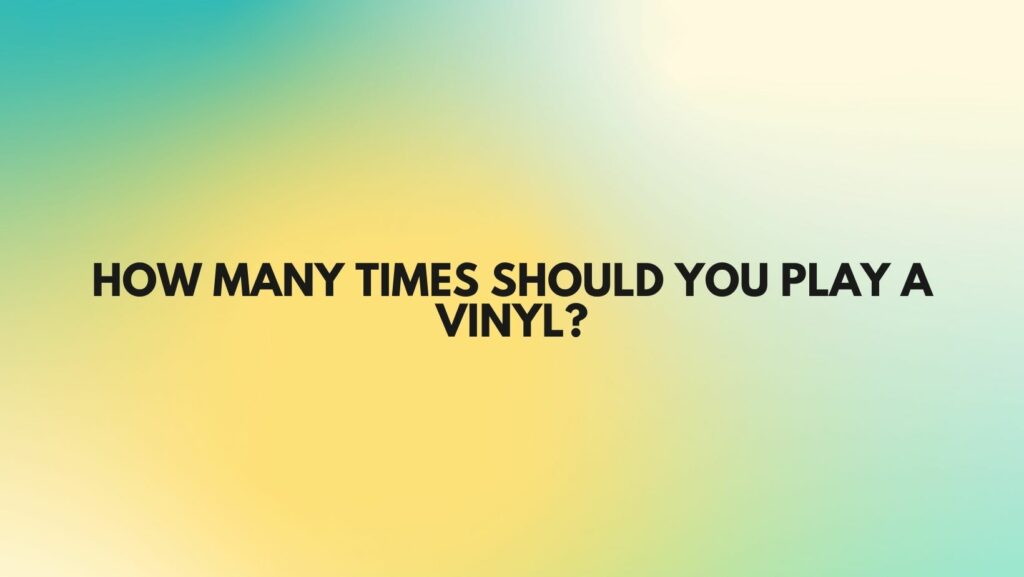Vinyl records have made a remarkable comeback in recent years, with their warm and analog sound quality attracting audiophiles and music enthusiasts alike. But as vinyl records age, a common question arises: how many times can you play a vinyl before it starts to deteriorate? While there’s no one-size-fits-all answer, several factors come into play when determining how many times you can play a vinyl record while preserving its quality and longevity.
- Record Quality
The most critical factor in determining how many times a vinyl record can be played is the initial quality of the record itself. Higher-quality pressings and well-maintained records are more durable and can withstand more plays without significant degradation.
- Turntable and Stylus Quality
The condition of your turntable and stylus also plays a vital role in preserving your vinyl records. A well-maintained, high-quality turntable and stylus can reduce wear and tear on your records. If your equipment is in poor shape, it can lead to excessive wear and damage to your vinyl.
- Cleanliness
Keeping your records clean is essential. Dust, dirt, and debris can accumulate on the grooves and cause unwanted noise and damage to your vinyl. Regular cleaning, using a proper brush and cleaning solution, can help prolong the life of your records and maintain sound quality.
- Tracking Force
The tracking force refers to the downward pressure exerted by the stylus on the vinyl’s surface. Setting the tracking force within the manufacturer’s recommended range is crucial. Too much tracking force can damage the grooves, while too little can lead to distortion and poor sound quality.
- Proper Handling
Properly handling your vinyl records is vital to their longevity. Always hold the record by its edges and avoid touching the grooves. Carelessness can result in fingerprint marks, which can negatively impact sound quality.
- Storage Conditions
Vinyl records should be stored in a cool, dry, and upright position. Exposure to extreme temperatures, humidity, and direct sunlight can warp the records. Using anti-static inner sleeves and protective outer sleeves can also help protect your vinyl from dust and damage.
- Frequency of Use
The more you play a vinyl record, the faster it will wear out. Repeated plays can cause the stylus to gradually wear down the grooves, resulting in a loss of sound quality. If a record is particularly rare or valuable, it might be advisable to limit the number of times you play it.
- Replacement Stylus
Styli have a limited lifespan, and their quality deteriorates with use. Replacing the stylus when it shows signs of wear is an effective way to protect your vinyl records and ensure optimal playback quality.
- Audiophile vs. Casual Listener
The number of times you can play a vinyl record also depends on your expectations. Audiophiles with high-end audio equipment may be more sensitive to subtle changes in sound quality and should exercise more caution in playing their records repeatedly. Casual listeners may be more forgiving of slight imperfections.
Conclusion
The lifespan of a vinyl record is influenced by a combination of factors, including its initial quality, maintenance, and the care with which it’s handled. There’s no set number of plays that applies to all records, but with proper care and attention to the factors mentioned above, you can extend the life of your vinyl collection. If you’re concerned about preserving the quality of your records, consider making digital backups of your favorite albums to reduce the need for constant playback. Ultimately, the love and appreciation for vinyl records should be balanced with the responsibility of preserving their longevity for future generations of music enthusiasts.


